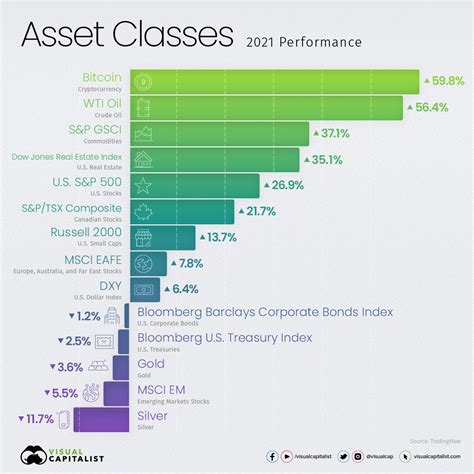CRYPTOCURRENCY
Market Correlation: How Cryptocurrencies Move Together
Market correlation: How are cryptocurrencies moving
The cryptocurrency market has always been an impressive and shaky place, with prices fluctuating wildly overnight. About time, investors are increasingly interested in understanding how cryptocurrencies are in contact with each other, leading to the development of new strategies to navigate the complex market.
In this article, we examine the concept of market correlation in cryptocurrencies and how this affects trading decisions.
** What is market correlation?
The market correlation suggests how two or more devices move, in response to changes in the entire market environment. In other words, it measures how closely prices are related to various cryptocurrencies, as they often respond to similar factors, such as interest rates, economic indicators and geopolitical events.
** Why is market correlation important?
Market correlation can have significant consequences for investors who invest or invest in several cryptocurrencies. By understanding how individual cryptocurrencies come into contact with others, merchants can better understand the emotions of the general market and make more well -founded decisions on their investments.
For example, if two cryptocurrencies correlate closely, it is wise to buy one and sell another to maximize yields. In contrast, if they have distinctive price movements, it can be safer to trade independently.
Factors affecting market correlation
Many factors can contribute to market correlation between different cryptocurrencies:
- Economic indicators : Interest rates, GDP growth, inflation and employment rates all affect the prices of cryptocurrency.
- Geopolitics : Events such as elections, sanctions and natural disasters can affect the market of cryptocurrencies.
- Regulatory changes
: Changes in the regulatory environment can affect the price movements of specific cryptocurrencies or entire markets.
- Technological Development : New blockchain technologies and innovations can lead to increased acceptance and prices for certain cryptocurrencies.
Examples of high correlation cryptocurrencies
Some cryptocurrencies are, of course
- Bitcoin (BTC)

: The price movements of Bitcoin dictate other tools as the largest cryptocurrencies by market capitalization.
- ETHEREUM (ETH) : The close relationship between Ethereum is controlled by the decentralized nature and the high adoption rate to the general crypto market.
- Litecoin (LTC) : The relatively stable price of Litecoin has led some investors to look at as a safe tool and increase demand for other correlated cryptocurrencies.
Examples of low correlation cryptocurrencies
In contrast, some cryptocurrencies show lower market relationships because of their unique characteristics:
- Star (XLM) : Stellar’s decentralized network and focused on cross -border payments to relatively stable price movements.
- Cardano (ADA) : Cardano placed strong emphasis on safety and scalability for low correlation with other cryptocurrencies.
- Binance coin (BNB) : The native token of the BNB is tied to the value of the Binance wealth, so it is less correlated with the wider crypto market.
Conclusion
Understanding the market correlation is essential for investors who want to navigate the complex cryptocurrency. By analyzing how cryptocurrencies contact each other and identify high and low correlation instruments, merchants can make more well -founded decisions on their investments.
As the cryptocurrency market develops further, understanding the concepts of theses becomes increasingly important to maximize yields and minimize risk.
importance importance analysis trading


Bài viết liên quan
Understanding The Dynamics Of Trading Ethereum Classic (ETC) And NFTs
Understanding the Dynamics of Trading Ethereum Classic (etc) and Non-Fungible Tokens (NFTS) Cryptocurrency has become a buzzword in the financial world, with many investors flocking to trade digital currencies like...
Identifying Reversal Patterns For Better Trading Outcomes
Identification of inverted models to best trading results in cryptocurrency The world of cryptocurrency trading is known for its high volatility and unpredictable market fluctuations. As a result, investors and...
The Role Of Tokens In Decentralised Finance
Role of chips in decentralized finances (Defi): Financial Future Revolution In recent years, the world has changed significantly in the financial environment. Traditional institutions and mediators have been replaced by...
How Governance Tokens Shape The Future Of Ethereum (ETH)
* Growth of Man Management Tokes and Their Edfecacts of Etreum * In Recentration, The Cyptocurrrency World Has Has Signly Changed the Management Has Been Structred. Traditional Centrolized systems ya...
How Decentralized Finance Is Reshaping Tokenomics
Cryptocurrency and increasing decentralized financing (Defi): How to develop tokenomics In recent years, the world of cryptocurrencies has undergone a significant transformation that is due to the increase of decentralized...
How To Secure Your Investments In Binance Coin (BNB) With 2FA
Secure your cryptocurrency investments with two factors on Binance Coin (BNB) The world of cryptocurrencies has experienced rapid growth and adoption in recent years, making it a popular choice for...
Understanding Market Depth And Its Effects On Trading: A Study On Chainlink (LINK)
Here is a comprehensive article about understanding the depth of the market and its effects on the trade, including a study on Chainlink (Link): Understanding of the market depth and...
The Benefits Of Multichain Strategies In DeFi
Here is a more detailed analysis of the benefits of Multichain strategy in DEFI: What are Multichain strategies? Multichain strategies include the use of many chains (e.g. Ethereum, Solana, Binance...
How To Create A Risk Management Plan For Crypto Trading
Creating a Risk Management Plan for Cryptocurrency Trading The world of cryptocurrency has come a long way since its inception in 2009. With the rise of new technologies and increasing...
Futures Expiration: Strategies For Successful Trading
**Futures Expiration: The Strategies Form. The world off crypto currency trading can be volitile and unpredictable. With the rice off cryptocurrencies such as Bitcoin, Ethereum, and others, the market has...
Understanding Price Action: A Focus On Dogecoin (DOGE)
Understand the price campaign: an approach in Dogecoin (Doge) The world of cryptocurrency has become increasingly complex and volatile in recent years, and prices fluctuate quickly in online exchanges. An...
The Importance Of Community Engagement In Crypto Projects
Here is a break in the importation of community engagement in cryptography projects: What is a community commitment crucial Participation of pre-sale : Many projects holde presale their official bill,...